5 Real-World Examples of Data Analytics
If you were in India at the time, you must have downloaded the Aarogya Setu app on your phone to detect any threat of infection. The app uses Bluetooth and data analytics for contact tracing.
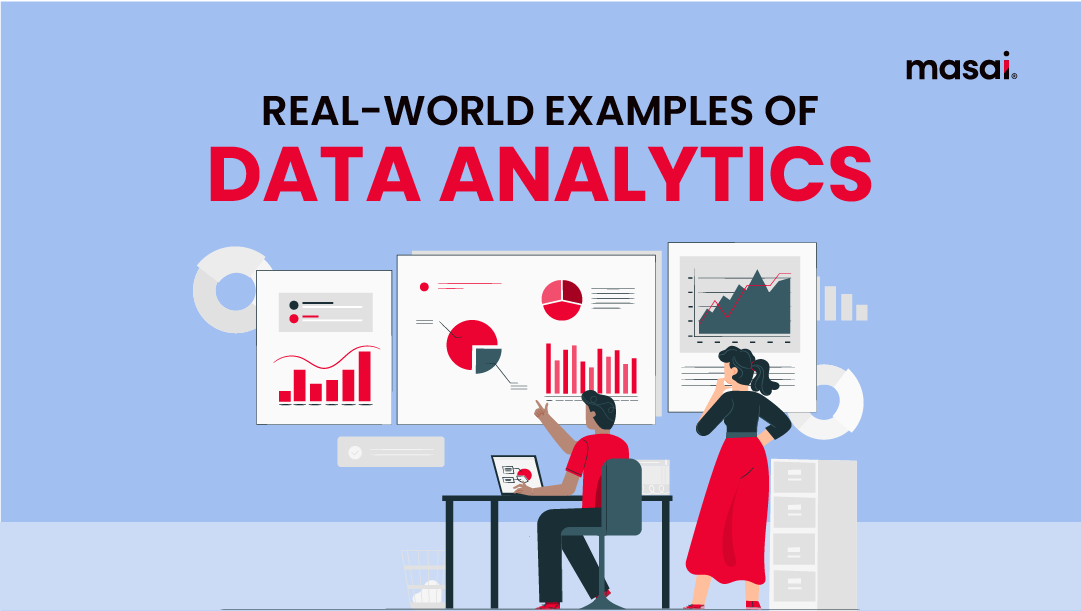
If you order a pair of sports shoes right now, the next minute you’ll get recommendations to buy sports trousers, tracksuits, and even socks.
Similarly, if you order a camera you’ll be bombarded with ads for tripod stands, lenses, and whatnot!
In fact, my friend says - even if he speaks a product name, he starts getting ads everywhere. (Are we being spied upon? Or maybe he’s gone crazy.)
How do these E-commerce websites know what we need? How do big companies figure out what’s the next product that’s going to create a ruckus in the market?
It’s all possible because of data analytics. Companies use pixels to track the consumer’s purchase history, behavior, and affinity towards a product/service, and analyze all this data to recommend the best-fit products for you.
Data analytics by definition is the process of making sense of the unstructured data to generate more value out of it and make better business and social decisions.
Table of Contents:
How Walmart uses analytics to boost sales?
How analytics helped the world fight COVID?
How Tesla makes cars self-drive?
How Netflix uses analytics for marketing?
Today, data is being collected at every corner of the street, and with every click on the touchpad by various businesses and websites. Analytics refines all this data and derives meaningful insights such as: What does the customer need? What’s the fastest shipping route for product delivery? And even big socio-economic issues like- How did the Covid lockdown affect the overall climate?
In simple words:
“If data is the new oil, analytics is the refinery”
And then comes - Big Data, which refers to larger, more complex data sets that can’t be processed by traditional software applications. It is better defined using 3 V’s-
- Volume
- Velocity
- Variety
Put simply, the data that comes in huge volumes with higher velocity, and a greater variety is termed big data.
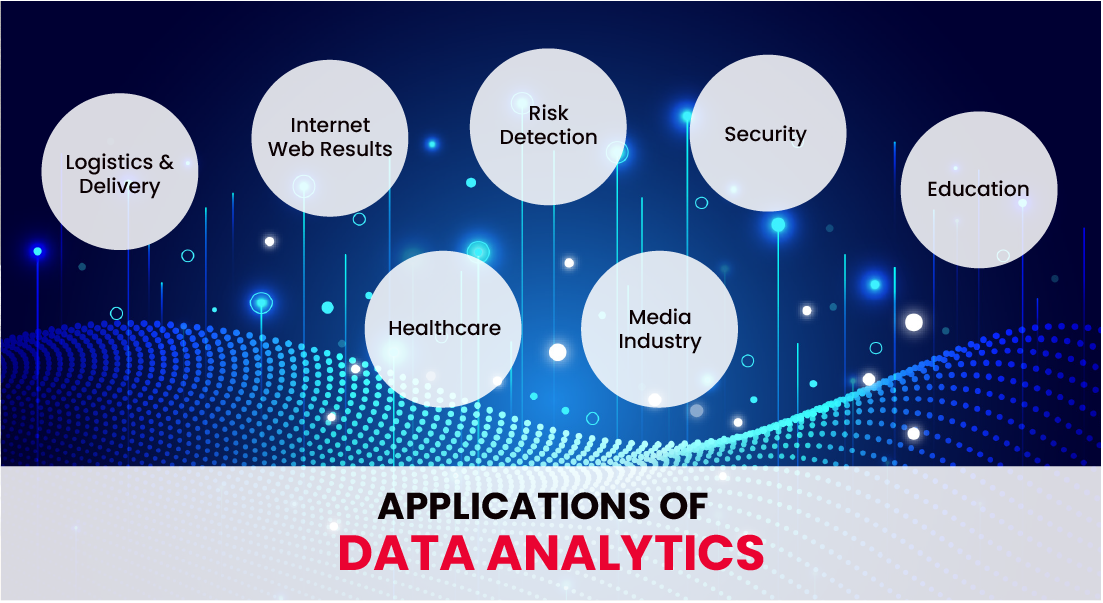
On the business scale, data analytics is also sometimes referred to as big data analytics (BDA).
In this article, we’ll uncover 5 examples and use-cases of this new buzzword on the block i.e. data analytics. Let’s get started:
Customer acquisition & retention
For any business, the customer is God. All marketing and innovation efforts circle around what the customer needs.
But in today's ultra-competitive market, acquiring customers is a tough nut to crack for companies.
Add to that the ever-changing behaviour and purchasing patterns of the new age customer who can get quickly influenced by anything new they come across on social media and other channels.
How should a company reach out to new customers while balancing marketing spends? How does one know which is the right target audience to speak to?
Enters - Big data analytics.
It allows businesses to keep a track of customer-related patterns and trends and delivers useful insights. Insights such as -
- What's the best target audience for a particular product? - based on location, age group, financial classification, etc.
- Which channels are the best for advertising the product to their target customer base?
- Exactly when do leads make the purchasing decision? What's the accepted ad frequency?
And so on.
Another challenge for companies today is retaining the customers they have. With a plethora of options on the customers' radar, they can easily switch between different brands and products. In such a fickle scenario, how does a company ensure brand loyalty?
Analytics is the saviour here as well. With a proper analytics strategy in place, companies can derive behavioural insights to retain their customer base by acting on their pain points, introducing new products and packages, offering discounts to regular customers, and so on.
How Walmart uses analytics to retain customers
Walmart, considered the largest retailer company in the world, launched ‘Walmart Lab’ to empower big data analytics and fuel its growth.
The loyalty program was one of the first initiatives designed by Walmart to improve customer retention. It uses predictive analysis to understand different types of customers and hone loyalty programs for different segments.
The program called Walmart+ charges $98 annually per customer and offers benefits such as unlimited free delivery, scan-and-go shopping features, and fuel discounts, to name a few.
Walmart also uses predictive analysis to forecast the demand for over 500 million products across US stores, making it more efficient and convenient for their logistics and offline retail wing.
As a result of its customer acquisition and retention strategy, the company has tripled its online sales from $21.9 billion in 2019 to $64.62 billion in 2021.
Risk detection and management
Risk detection in finance was one of the earliest applications of big data analytics. Banks and other organizations were in dire need of a mechanism that could rescue them from losses incurred by fraud customers and bad debts.
With big data in the frame, they could segment the customers based on their past expenditure, credit status, and other variables to predict the probability of risk and default. Something that would take them hours of manpower, if not days.
Similarly, analytics helps companies manage the risk better in the insurance industry. While insuring an individual, the insurance company measures the risk involved through analytics on claims data, actuarial data, and risk data.
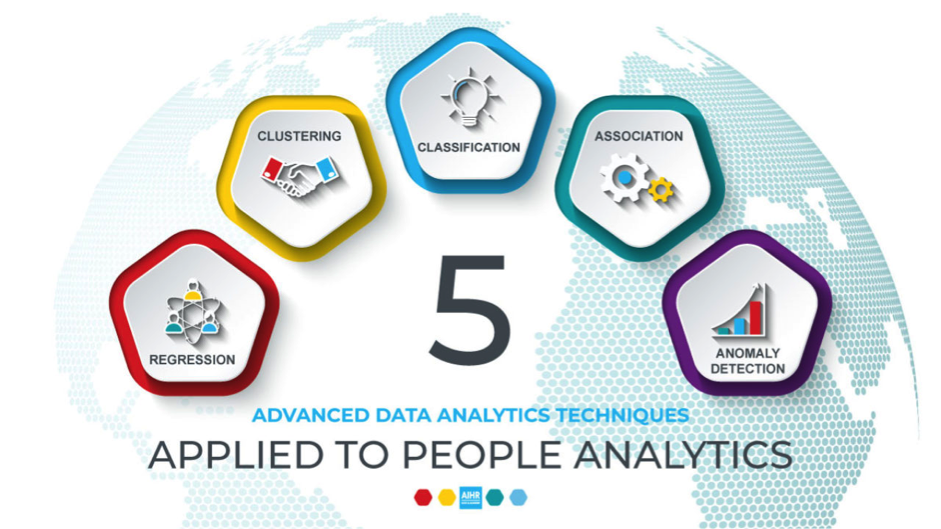
Insurance companies collectively invested $3.6 billion in data analytics in 2021 alone. As a result, they experienced a 60% increase in fraud detection rates, thereby boosting their cost savings by 40-70%.
Risk analysis examples
Kreditech, a German company runs analysis on factors such as location data, social media analysis, online purchasing power, etc. before lending money to their customers. Using big data, they make sure to churn out individuals that are more likely to default by assigning them credit scores.
Similarly, the American MNC Morgan Stanley uses a big data program to identify potential risks using pattern recognition.
Increasing the quality of medical care
To understand the application of analytics in healthcare, we must first understand - What data in healthcare are we referring to?
There is data related to the procedures of the business side of health care such as machine usage, medicine data, etc. as well as data related to the health of a patient or a collective population.
This data is collected through various technological tools used in the healthcare industry and govt organizations, some of which are:
- Electronic Health Records (EHRs)
- Electronic Prescription Services (E-prescribing)
- Personal Health Records ( PHRs)
- Patient Portals
- Health-Related Smart Phone Apps
The huge amount of datasets collected through these tools are then stored on the cloud, and analyzed further to deliver results both on the business front as well as the patient care front.
There are other noticeable applications of big data in healthcare such as-
- Health Tracking - Combined with the Internet of Things (IoT), big data analytics has reformed the tracking of healthcare statistics and vitals. People are wearing fitness bands and watches that detect vitals like heart rate, distance walked, and sleeping patterns to blood pressure, glucose levels, and many more.
- Episode Analytics - Episode Analytics work with big data tools to help health care professionals understand their performance and renovate the care delivery system. This results in more optimized processes and reduced costs.
How data analytics helped the world fight COVID
COVID-19 has had a huge impact on the world. But it could have been even more catastrophic if not for the use of big data analytics in the healthcare industry.
All the stakeholders including healthcare professionals, lawmakers, and researchers turned to data analytics and predictive modelling in order to help distribute resources, optimize patient care services, and apply preventive measures all across.
Thanks to the above-mentioned tools, the data keeps coming at a constant rate allowing for a better understanding of the patients' symptoms, and how to respond to them.
If you were in India at the time, you must have downloaded the Aarogya Setu app on your phone to detect any threat of infection. The app uses Bluetooth and data analytics for contact tracing. (Know more about it?)
IoT analytics
Another major application of data analytics is the Internet of Things (IoT).
IoT refers to the network of physical objects that uses sensors, software, and other technologies to connect and exchange data with other devices over the internet.
IoT includes everyday-use devices such as thermostats, smart lights, refrigerators, smart watches, etc. to large-scale industrial devices such as cars, pipelines, weather stations, and delivery trucks among others.
All these devices have sensors that collect different types of data which is then analyzed according to their usage.
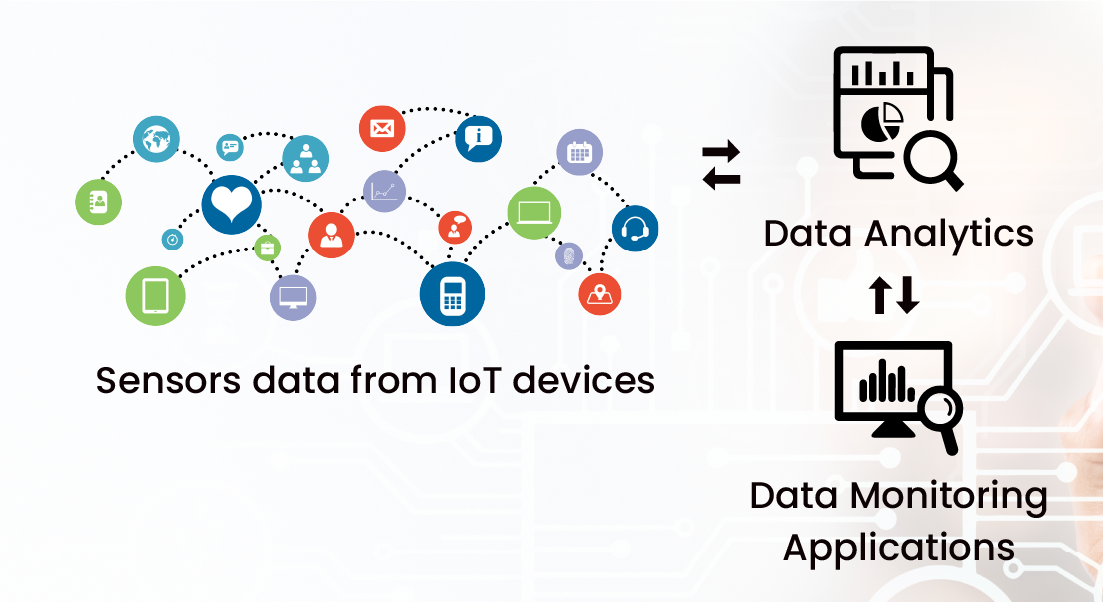
IoT is undoubtedly one of the most significant technologies of the 21st century, facilitating seamless communication between people, processes, and machines. It's where the physical world merges with the digital world.
According to Statista, we already have an estimated 30.73 billion IoT-connected devices (Heck! we even have smart clothes and smart shoes now).
Analytics make sense of the huge sets of data collected from these IoT devices and empower human lives.
How Tesla uses IoT analytics
Once a Twitter user suggested to Elon Musk, founder & CEO, of Tesla motors that he would like to sit in his car and ask the car to take him somewhere-
@elonmusk Surely I am not the 1st to suggest this but it would be cool to get in my car and Ask it to take me somewhere
— Shaymus (@TheRealShaymus) October 21, 2017
Elon replied - It won't even need to ask you most of the time.
As promised, Tesla has set up an exclusive range of self-driving (autonomous) cars, converting the fantasy into reality.
How does it work?
That's where IoT analytics comes into the picture. These vehicles process vision, sound, and radar data using IoT devices, and when the cars pass each other, they share data which is then analyzed to decide the correct path, traffic, and other things.
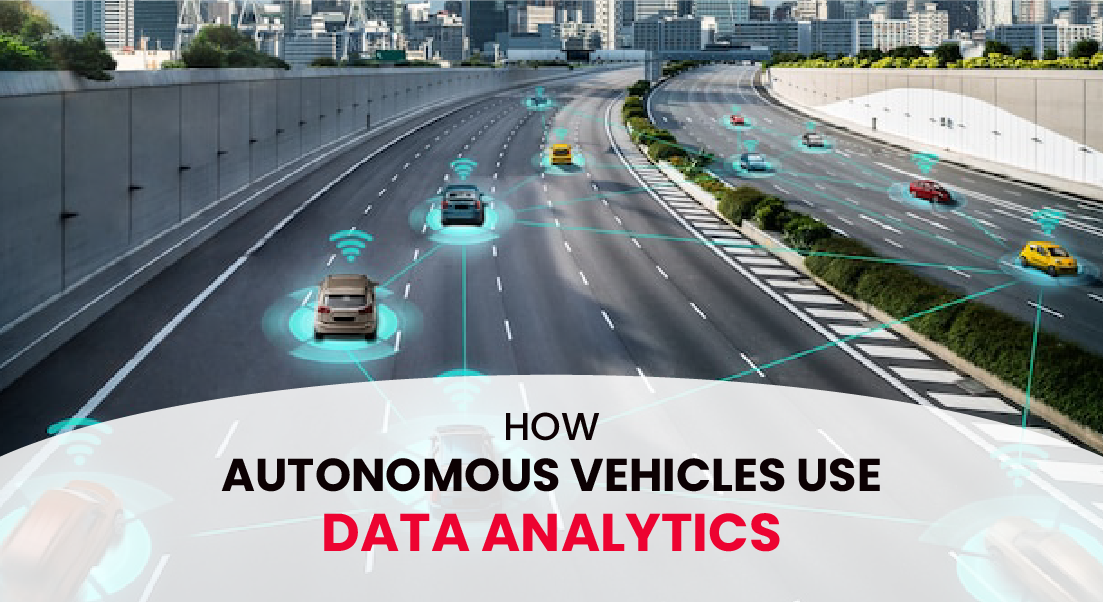
Marketing campaigns for businesses
Big data analytics makes a huge difference between marketing campaigns that fail and those that succeed.
When big data is analyzed properly, marketing teams get important touch points with the target market, and they can better optimize their campaigns.
Here are a few ways analytics boosts marketing and advertising campaigns-
- A better understanding of the target market - Insights derived from analytics provide the most innovative, and precise understanding of the target segment.
- Improved performance through past analysis - Marketing teams can analyze their past campaigns and understand which tools, budget, frequency, and type of content work the best for them. They can then use these insights to bolster their future campaigns.
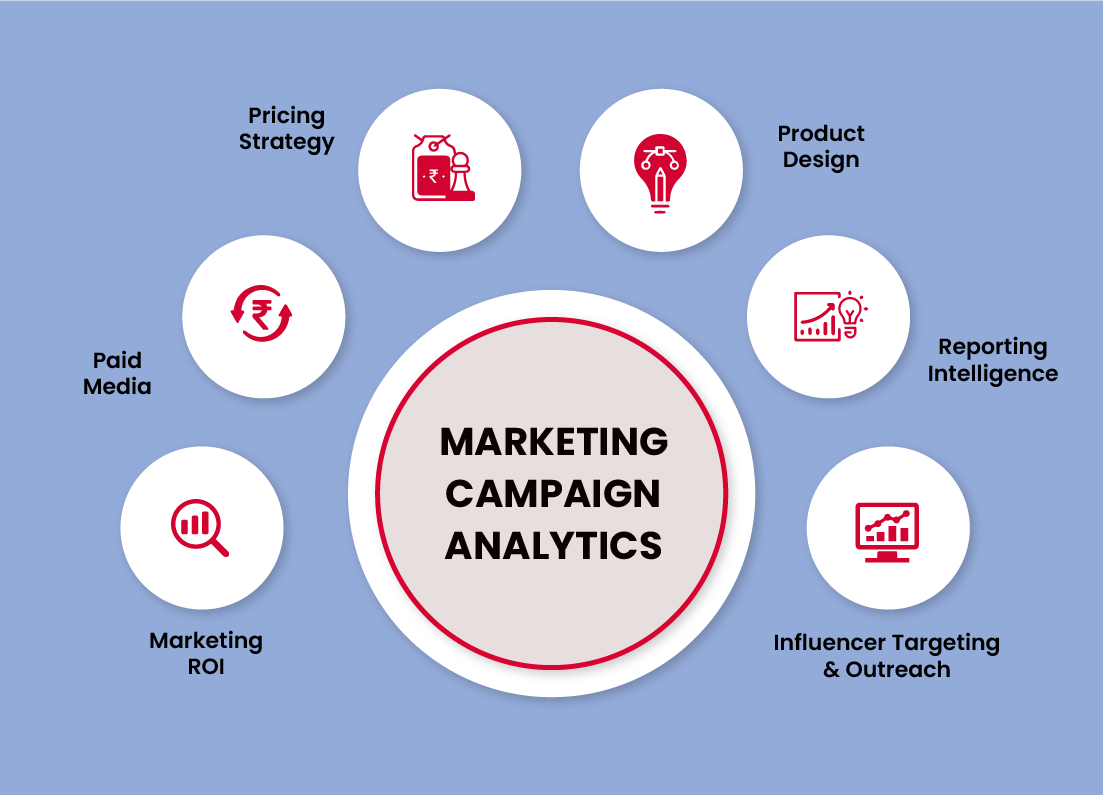
How big brands use analytics for marketing
Almost all the big companies are using BDA(Big Data Analytics) to drive marketing campaigns and thereby sales.
Let's look at how two hugely popular brands are benefitting from this -
Amazon
Amazon, being the biggest online retailer by a stretch uses big data analytics in multiple ways-
- Product recommendation: As we discussed at the start of the article, even if you just take a short glance at a product - Amazon will use that data. Similar products will follow you on the page, in your social media feed, and in ads. Not surprising at all that Amazon earns 35% of its annual sales through product recommendations.
- Dynamic Pricing: Have you ever noticed - If you check out a product over and over again, the prices seem to increase. It happens because Amazon has tracked your intent and knows that you might be willing to pay even more for the product. The same logic is used while selling airline tickets as well.
Netflix
Netflix is one wicked cat when it comes to product marketing. They retain 93% of their consumers, thanks again to big data. They collect data about the times during which different subscribers watch the shows, do they binge-watch or watch over the weekends, and other similar metrics.
This helps them serve just the right shows to their consumers.
Netflix displays different posters of the same movies/shows to different individuals based on their interests - Personalization at its best, right?
They even have plans to create different trailers for different audiences - for example, if a person likes comedy movies, they are more likely to watch a violent movie if the trailer is filled with comic scenes.
Now that's quite wicked, Netflix!
Final Thoughts
So there it was! 5 real-world applications and case studies of data analytics in the modern world. To be honest, it was quite difficult to contain the applications to just 5 (since there are numerous), so we have listed a few notable mentions for you-
- Logistics & Delivery
- Product innovation
- Communication, media & entertainment
- Energy and utility
- Education
The idea was to give you a gist of what constitutes data analytics and how exactly it empowers human life today.
You can learn about it in detail including skills needed to become a data analyst, career scope in the field, and more in this article here.
If you’re serious about building a scalable career in big data, this part-time data analytics course will equip you with just the right tools and skill set to become an industry-ready data analyst professional- Join now at zero upfront fee.

